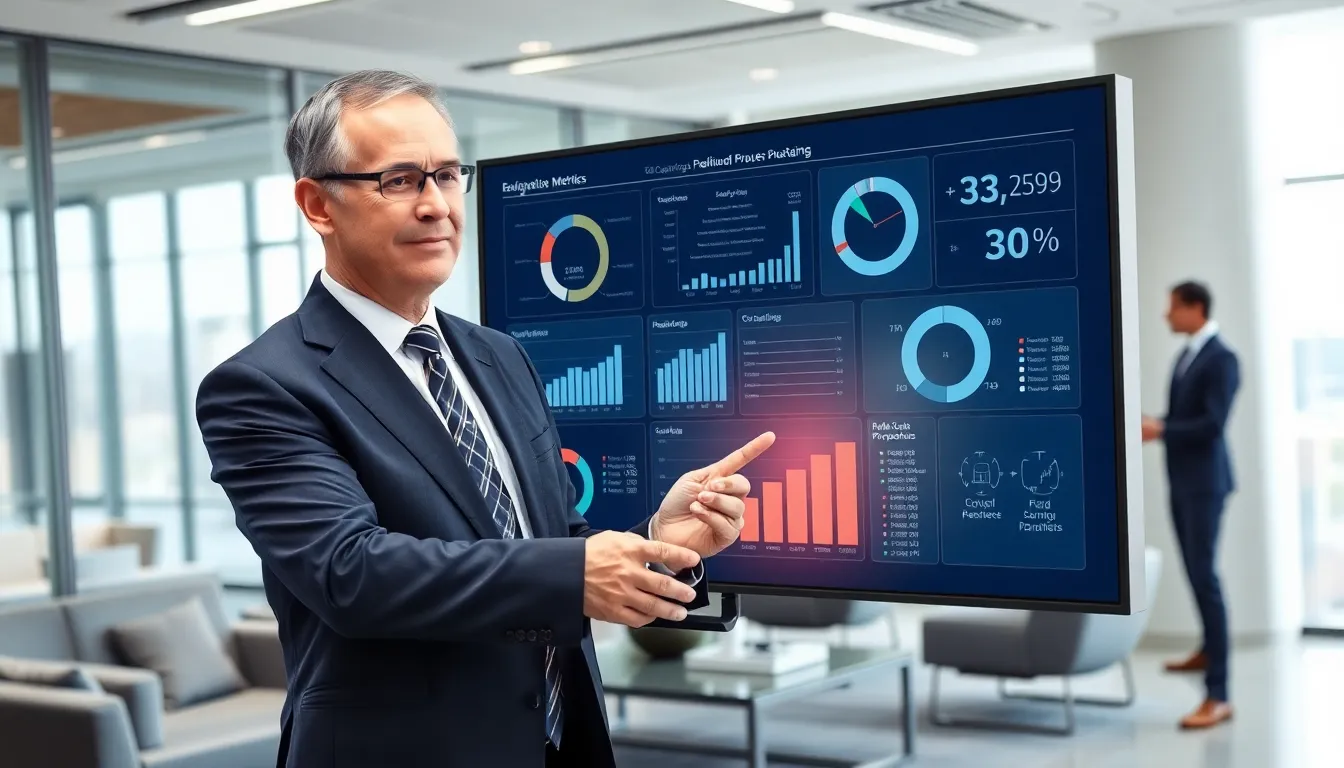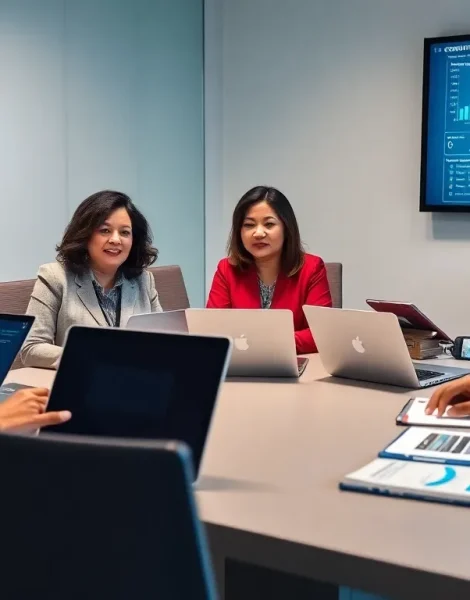In the world of government procurement, navigating the maze of regulations and contracts can feel like trying to find a needle in a haystack—if the haystack was on fire and the needle was wearing a disguise. But fear not! Government procurement platforms are here to save the day, transforming the chaotic process into a streamlined adventure.
Table of Contents
ToggleOverview of Government Procurement Platforms
Government procurement platforms serve as essential tools in simplifying complex purchasing processes. These digital solutions enhance transparency and efficiency within procurement, allowing government agencies to manage their needs effectively. By utilizing these platforms, agencies can access a wide range of suppliers and streamline contract management.
Platforms typically centralize information, enabling users to search for products and services easily. Features like e-sourcing tools, vendor management systems, and contract repositories support various procurement activities. Many platforms also facilitate compliance with government regulations, ensuring procurement activities align with legal requirements.
Collaboration forms another key aspect of these platforms. Government officials and suppliers can engage directly, fostering better communication and understanding. Offers and bids can be submitted electronically, expediting decision-making and reducing delays.
Cost savings represent a significant advantage. Government agencies can compare multiple suppliers, leading to competitive pricing and optimized budget allocation. Data analytics available through these platforms help agencies track spending patterns and identify opportunities for improvement.
Examples of prominent government procurement platforms include GSA’s eBuy, FedBizOpps, and SAM.gov. Each solution provides tailored features catering to the different needs of federal, state, and local governments. Adopting a government procurement platform enhances overall operational efficiency, aiding in the pursuit of public sector goals.
Key Features of Government Procurement Platforms

Government procurement platforms offer critical functionalities that enhance efficiency and streamline purchasing processes. Users benefit from a set of essential features designed to support their specific needs in government procurement.
User Interface and User Experience
An intuitive user interface promotes effortless navigation for all users. Clean layouts and organized categories allow users to find information quickly. Responsive design ensures accessibility from various devices, enhancing flexibility for users on the go. Moreover, engaging dashboards display relevant metrics, improving overall user engagement. Support features, like chat tools and tutorial videos, guide users through functions, helping them maximize platform use.
Integration Capabilities
Seamless integration with existing systems is vital for government agencies. These platforms connect effortlessly with financial management software, enhancing data consistency across workflows. Compatibility with electronic bidding systems simplifies submissions and evaluations. User access to third-party tools, like analytics and compliance checkers, strengthens overall procurement strategies. Additionally, APIs allow for customized solutions, adapting platforms to specific agency requirements.
Benefits of Using Government Procurement Platforms
Government procurement platforms significantly enhance operational efficiency for agencies. These tools streamline various aspects of the purchasing process, leading to multiple advantages.
Cost Efficiency
Cost savings stand out as a primary benefit of using government procurement platforms. Agencies can easily compare suppliers and take advantage of competitive pricing. Data analytics features support tracking spending patterns, allowing for informed budget decisions. Reports generated from these platforms highlight areas for potential savings, promoting better financial management. Increased access to bulk purchasing opportunities can also drive down costs for many supplies and services. Ultimately, optimizing procurement strategies through these platforms maximizes available resources.
Transparency and Accountability
Transparency and accountability are vital components of government procurement platforms. Centralized data access ensures all stakeholders can view procurement activities, minimizing opportunities for misconduct. Monitoring features allow tracking of the procurement process, ensuring compliance with regulations. Everyone involved benefits from this clarity, promoting trust between government agencies and suppliers. Audit trails document every step, enabling accountability at each phase of procurement. Improved visibility into spending fosters responsible financial stewardship, which enhances the credibility of government operations.
Challenges in Government Procurement Platforms
Government procurement platforms face several challenges that hinder their effectiveness. These issues, such as security concerns and compliance problems, require ongoing attention.
Security Concerns
Security concerns present significant challenges for government procurement platforms. Protecting sensitive data from cyber threats remains a priority for both agencies and vendors. Cyberattacks on procurement systems can lead to unauthorized access to financial information and personal details. Agencies must implement robust encryption, multi-factor authentication, and regular security audits to mitigate risks. Furthermore, training personnel on security best practices is essential to safeguard sensitive data. Vigilance in identifying vulnerabilities helps maintain trust in the platform’s integrity.
Compliance Issues
Compliance issues also create hurdles in government procurement processes. Meeting federal, state, and local regulations often demands meticulous attention to detail. Non-compliance can result in penalties, legal disputes, and reputational damage for agencies. Procurement platforms must provide features that facilitate adherence to regulatory standards, including automated compliance checks. Consistency in documentation and record-keeping becomes crucial for audits. Many platforms incorporate tools that support tracking of procurement activities to enhance compliance efforts.
Future Trends in Government Procurement Platforms
Emerging trends are transforming government procurement platforms, enhancing their effectiveness and functionality. Cloud-based platforms offer flexibility and scalability, allowing agencies to adapt to changing needs. Increased emphasis on data analytics enables informed decision-making. Procurement professionals can leverage insights derived from spending patterns to optimize budgets.
Artificial intelligence plays a pivotal role in streamlining processes. Automated systems can analyze vendor performance, predict procurement risks, and suggest improvements. These capabilities reduce manual errors and accelerate the procurement cycle. Integration of machine learning algorithms allows platforms to personalize user experiences, tailoring features to meet specific agency requirements.
Adoption of blockchain technology introduces enhanced security and transparency. By maintaining immutable records, blockchain reduces the risk of fraud and increases trust amongst stakeholders. Real-time tracking of procurement transactions ensures accountability and compliance with regulations.
Sustainability considerations are gaining traction in government procurement. Agencies prioritize eco-friendly suppliers and products, thereby aligning procurement strategies with broader environmental goals. Platforms are incorporating sustainability metrics into supplier evaluations, promoting greener purchasing decisions.
Collaboration tools within procurement platforms foster communication between stakeholders. Enhanced features support real-time collaboration, enabling teams to work together seamlessly. As remote work becomes more common, interactive platforms that support virtual meetings and shared documents gain importance.
User experience remains a focal point for future design. Intuitive interfaces and mobile-responsive designs make navigation easier for all users. Continuous feedback loops will drive improvements, ensuring platforms meet the evolving needs of government agencies.
Investment in cybersecurity measures will increase as platforms expand. Vigilant protection of sensitive data necessitates advanced security protocols, including encryption and regular audits. Addressing these concerns will reinforce trust and facilitate broader adoption among government entities.
Government procurement platforms represent a significant advancement in streamlining the complex procurement process. By centralizing information and enhancing transparency they empower government agencies to make informed decisions efficiently. The integration of modern technologies like AI and blockchain further strengthens security and accountability while promoting sustainability.
As these platforms evolve they will continue to address challenges such as compliance and data security. Investing in these tools not only leads to cost savings but also fosters a collaborative environment between government entities and suppliers. Embracing these innovations is crucial for enhancing operational efficiency and achieving public sector goals.








